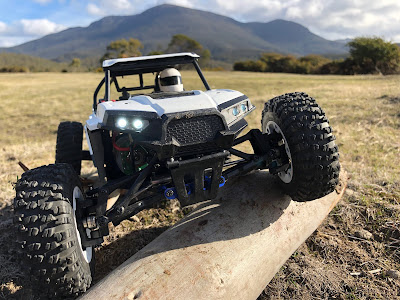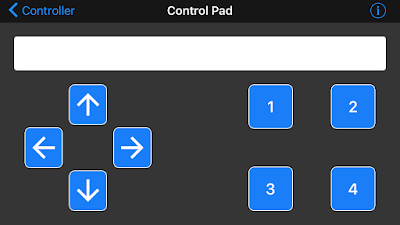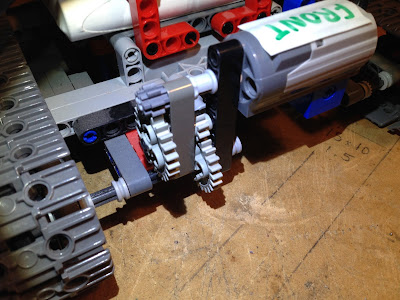Since i put the front diff back in the car really felt as though it was running with the brakes on. Even on the bench, it seemed to take more throttle to just get the wheels moving. Looking at the drive-train rotating, there was clearly some oscillation there that wasn't ideal. It was evident most on the central shaft behind the front diff.
So .. started pulling it all apart again. Because it was easy, I tested with the rear diff removed and it was clear the problem wasn't there. Then I thought it was my front diff fix (upgrade 12T
driving gear and Then Cup to accept M3). And although my drilling
wasn't perfectly straight, it shouldn't have caused the driving gear to
rotate out of true of the bearing:
 |
| This to remind me which way the front dif goes.. ;) |
..but with the front diff removed and the center shaft flapping in the air, still the noises. So i very carefully ran the car with the large center reduction gear exposed:
 |
| Note screwdrivers to stop shafts flying around the place.. |
And even at that point it was evident that there was oscillation. No issue with the motor and reduction gears or the little silver bearings, but the shaft the reduction gear sits on (reduction pinion (0084)) isn't true.
 |
| Reduction gear with universal joints, front (left) and rear (right). |
So I have two issues here. 0084 may be bent(?). And with everything open it became clear that both the universal joints are noisy, especially the rear one which has slop in just about every direction.
So what to do..? I pulled the springs and pins etc out of the universal joins (how intricate and amazing are they?!) and filleditfullofgreaseandputitbacktogether. What? yes. I may have just made a dirty greasy muck trap for later on, but for right now .. it's quiet. Which helps finding where other noises are coming from. Not that there's anywhere left really..
..put back together, pulled it apart. Not a nice set of noises. I'm getting a metal vs plastic grinding. Current guess is a bent 0084. PS: I didn't do anything on the 0084 theory because..
UPDATE: for reasons i had the rear of the car apart again and i found something very significant! If i "over" tighten the 4 screws holding the rear diff on then they compress the housing and it causes the diff to bind and make a not very nice noises. I ended up adding thin washers between the two halves of the diff and when tightened up it ran smooth. Gaps in the housing i sealed up with silicone.
NOTE TO SELF, INSERT PICTURE HERE
UPDATE 2: Same same in the front!!! Ended up making a thin cardboard gasket between the front and rear halves of the front diff housing and again that fixed the issue there in that it's much quieter now, for now.. :)
NOTE TO SELF, INSERT PICTURE HERE



















































